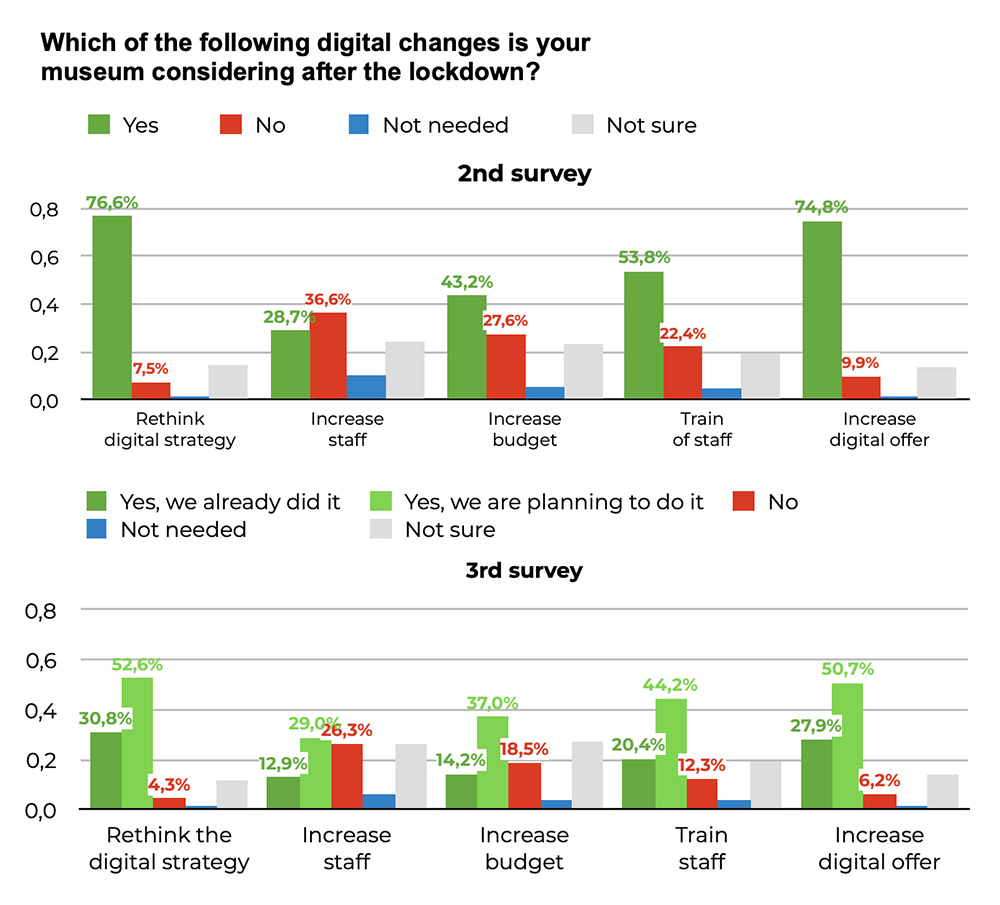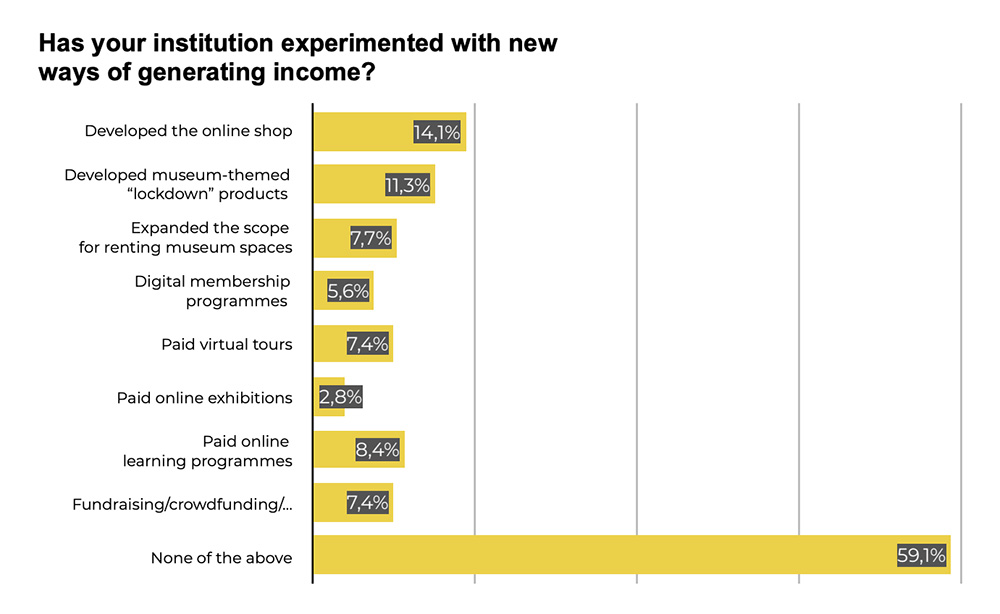Early in 2020, nearly 95 percent of museums worldwide temporarily shut down without knowing when operations could resume. Layoffs became the norm, visitorship plummeted, and arts venues began walking a tightrope of survival. As museums slowly reopen, doubt remains about whether they might ever recover from year’s worth of economic damage.
This stark reality is evident in a recent report, Museums, Museum Professionals, and COVID-19, compiled by the International Council of Museums (ICOM), an international organization that sets professional and ethical standards for museums. Following two reports on COVID-19’s impact on cultural institutions, this third survey consists of responses from 840 museums and staff members across five continents, from Europe to the Arabic countries, fielded from April 15 to May 29. The outlook, sadly, isn’t too reassuring.
As of Spring 2021, museums are generally doing worse than they did in September and October 2020, largely due to the second wave of COVID-19, while the percentage of staff layoffs has nearly doubled from 5.8 to 9.6 between ICOM’s second and third surveys. The good news is that compared to last year, not as many museums are facing permanent closure — down 4.1 percent from last year’s 12.9 percent. Still, without strategic revamping of internal operations and digital innovation — admittedly a challenge for many small organizations — full and long-term recovery is far from a certainty. Here are three key takeaways from the report.
The digital gap

Planning or reconsidering digital strategies and offers remains a priority for most museums post-COVID. Image: ICOM
ICOM’s survey reveals many museums haven’t put significant efforts into digitizing their operations. For example, only 13.4 percent of respondents reported allocating a budget for digital activities and communications, while 26 percent had no idea how much was spent.
Despite the numbers, COVID-19 has awakened museums to how vital digital strategies are. “Although the resulting economic crisis will obviously be a major obstacle in terms of the economic and human resources that museums will be able to invest in,” the report notes, “more and more institutions are now aware of the fundamental importance of digitization.” In both the second and third surveys, a vast majority of institutions said they’re rethinking their digital strategies or increasing their digital offers.
While the pandemic has indeed reoriented how museums think about the digital space, the attendant economic crisis remains a major barrier to them enacting and investing in digital transformations. The report recommends governments and international organizations act proactively by lending support to smaller institutions and girding their digital build-outs for a post-COVID climate.
Alternate forms of revenue

More than half of the survey’s respondents report not dipping into alternate forms of income, likely reflecting a lack of the resources or infrastructure required to launch such initiatives. Image: ICOM
Over 2020, in the absence of visitor traffic — 70 percent of respondents recorded more than a 50 percent drop in annual visitors — museums have had to consider alternate revenue streams. While a surprising 59.1 percent of those surveyed have not tapped different streams of income, those that have leaned mostly toward e-commerce: 14.1 percent have expanded their online sales and 11.3 percent have created new products, notably lockdown-related ones (i.e. masks).
Few institutions launched initiatives like virtual memberships (5.6 percent) and paid online tours (7.4 percent), despite the reported successes of such programs as the British Museum’s Virtual Visits. Understandably, developing online programs is an uphill task for smaller museums lacking the funding, resources, and digital infrastructure, leaving them to get creative with social media and e-commerce in ways that tap their existing communities.
The plight of smaller institutions
While large global museums with multiple locations are likely to survive economic turbulence, small institutions aren’t in the green yet. “For these museums, the possibility of permanent closure is much more significant than for medium to large museums, as is the need to reduce exhibitions, programs or opening hours,” ICOM reports. Similarly and unsurprisingly, public museums are in better financial circumstances, being able to more readily stabilize than ones relying mostly on earned income.
All of which is dire not just for the long-term survival of museums, but for the local communities they serve. Flexible funding or grant systems, endowments from private and public donations, and corporate sponsorships can help secure the continued operation of small institutions — essential and urgent to sustain museums as much as their full-time and freelance workers. “Museums need emergency resources to adapt their business models,” the report notes, “and continue to fulfill their fundamental role in society.”



